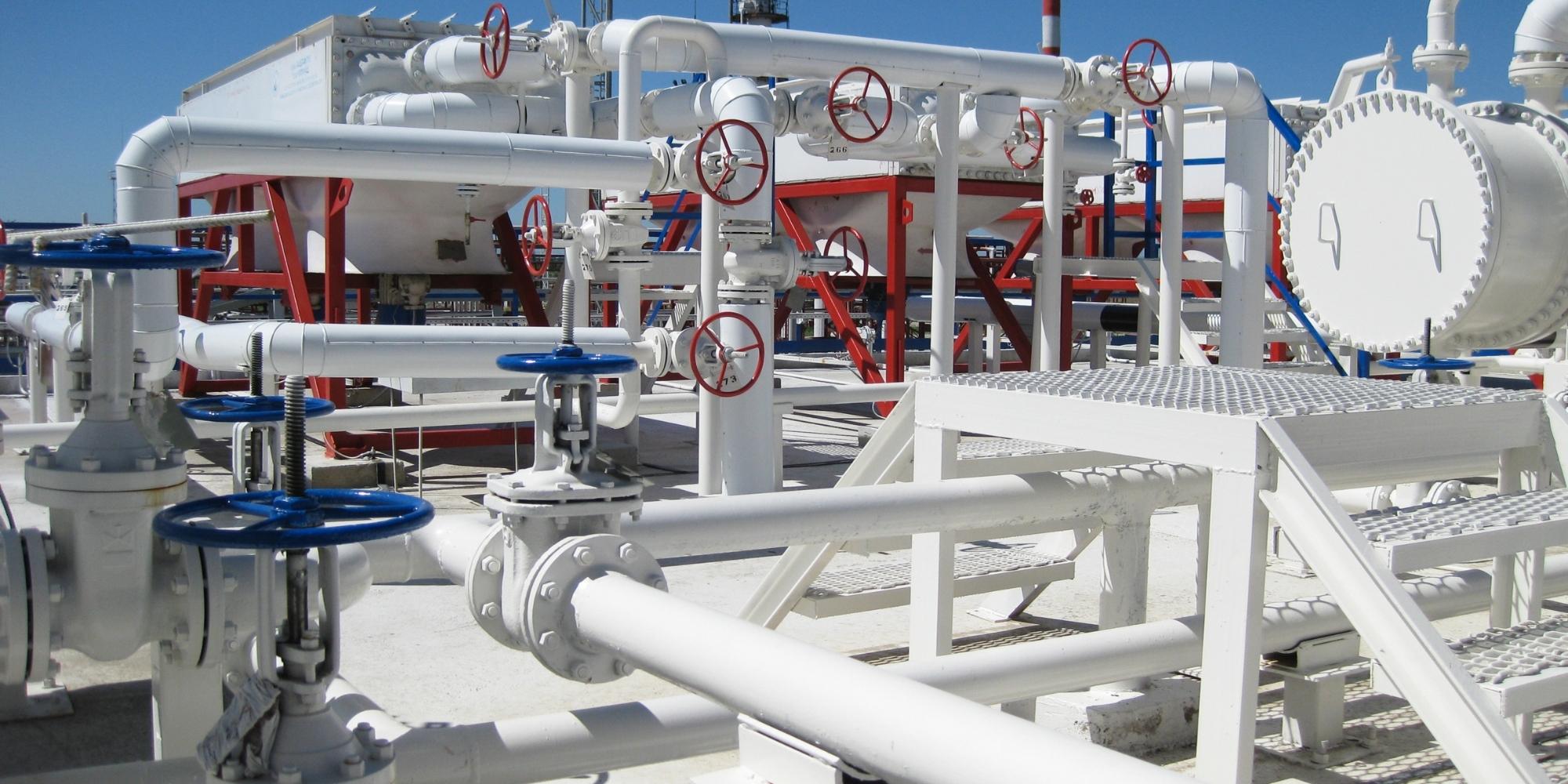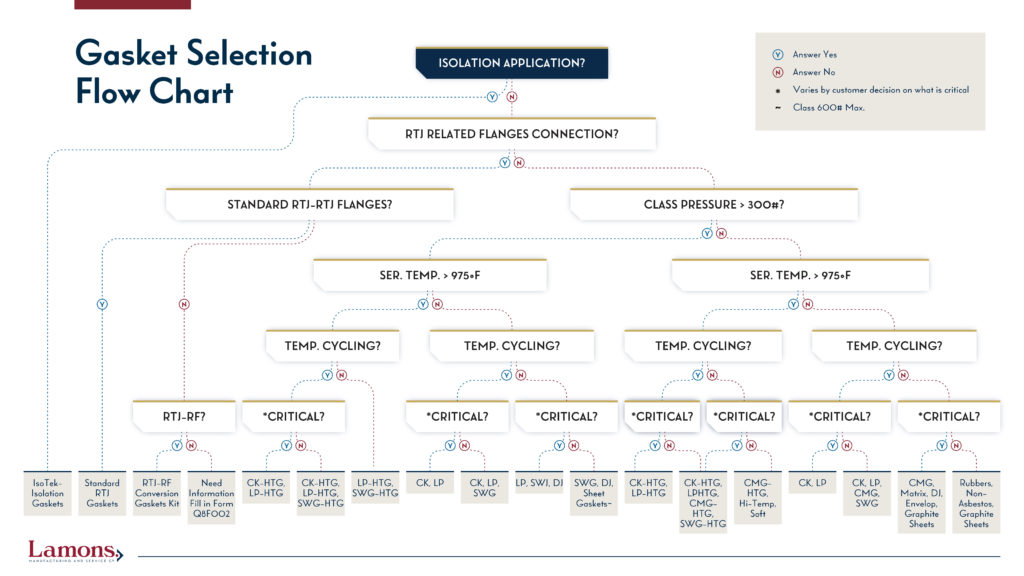How to Choose the Right Gasket for Your Application

Choosing the correct flange gasket for a piping or valve system is a critical decision. The right choice is essential to the integrity, reliability, and safety of your system’s operation. The wrong gasket, on the other hand, may cause malfunctions, leaks, damage, and downtime.
How many types of gaskets do you have to choose from? In short, there are hundreds. Most fall into one of the following categories:
- Metallic gaskets
- Semi-metallic gaskets
- Non-metallic gaskets
Within each category, various gaskets are designed to fit different applications. With so many options available, how do you choose the right gasket? As manufacturers of a wide range of sealing products, we’re here to help you find a solution that is purpose-built to deliver the unique performance characteristics you need.
Consider Relevant Factors that Impact Gasket Choice
When choosing a gasket for your application, it’s important to gather information on the various factors that will impact the specific gasket type, material, class, and size that you select. These factors include:
- Pressure
- Temperature
- Media type
- Flange type
- Surface finish
Once you have gathered information on these factors, you’ll have the ability to narrow down your gasket choices to find the one that offers the best performance for your needs. Here’s an overview of the most relevant factors and how they will affect your gasket choice:
Pressure is an essential factor that helps gaskets create a reliable seal. Your gasket will need to be able to withstand the pressure exerted on it from the flange face, as well as from the internal and external environments that the gasket provides protection against. Different gaskets are designed to withstand different amounts of pressure. For example, the American Society of Mechanical Engineers (ASME) pressure rating system classifies seven pressure classes: 150, 300, 400, 600, 900, 1500 and 2500.
Temperature of the internal medium and the external environment will also help determine the right gasket for your application. Some gaskets perform well in a wide range of temperatures, while others are designed for extreme high-temperature or even cryogenic conditions.
Media type not only impacts pressure and temperature, but also can impact your gasket selection in other ways. Some media are highly flammable, often requiring a fire-safe gasket, while other media will demand a corrosion-resistant gasket material. Some gasket materials are particularly effective in fluid applications, and others also have strong chemical resistance designed to meet NSF 61 standards. For example, Lamons IsoTek gaskets are NSF 61-rated and effective for multiple process industries. In short, matching your media type to the best gasket for the job will help you narrow down your options to the one that best suits your application.
Flange type will also affect your gasket choice. Flanges are used to join pipes and valves within your system, and gaskets are used to seal the flange. There are multiple types of flanges, including raised face, flat face, full face, ring-type joint, and more. Flanges can also vary by country and industry. Identifying what type of flange you have will help you determine which size and type of gasket you will need to effectively seal it.
Flange finish of the faces of your flange can range from smooth to serrated and everything in between. Surface finish can be calculated as Roughness Average (Ra) or Root Mean Square (RMS), and the degree of surface roughness will help determine the gasket material that will perform best for you. For example, most metal gaskets perform best with a very smooth surface finish, while non-metallic gaskets and semi-metallic gaskets generally perform better with a rougher flange surface finish.
| Surface finish | (Mu) Inches | (Mu) Meters |
| Smooth | 63 | 1.6 |
| Semi-smooth | 125 | 3.2 |
| Rough | 250 | 6.4 |
Know Your Gasket Material Options
Gasket materials fall into three main categories: metallic, semi-metallic, and non-metallic. These three categories offer different benefits and have different requirements for best performance.
Metallic gaskets, which can include both solid metal and Ring Joint Gaskets, offer creep resistance and structural stability, and can create a very tight and reliable seal. Metallic gaskets typically offer less forgiveness regarding surface finish, alignment, and parallelism. They also require higher gasket stress than other gasket types.
Semi-metallic gaskets feature soft, pliable sealing materials supported by metal that create seals with improved tightness while allowing for lower overall load requirements compared to fully metallic gaskets. This category of gaskets includes a variety of styles, sizes, and materials, making them versatile enough to work for a wide array of applications, including:
- Cryogenic to 1500+ degrees
- Vacuum to 1000’s of psi or 100’s of bar
Non-metallic gaskets, also called soft gaskets, are usually less expensive than metallic gaskets and can be created in complex or simple shapes. Non-metallic gasket materials include elastomeric and fiber, compressed non-asbestos, PTFE, flexible graphite and more. Choosing the correct material is critical because non-metallic gaskets can also be more prone to creep relaxation and movement under load in some applications.
Use Our Gasket Selection Flowchart
Once you are familiar with the different gasket types and have gathered information on the relevant factors that you need to take into account, it’s time to select your gasket. Use our Gasket Selection Flowchart to find out which gasket model(s) will deliver the highest integrity, reliability, and safety for your application.
Determine Whether You Need a Custom Solution
Lamons Engineering is here to help assist you in determining whether a standard gasket or custom solution is needed for your application. If a standard sealing solution is not sufficient or has been causing repeated challenges, Lamons Engineering can accommodate your needs by developing a custom gasket using a range of metallic, semi-metallic, and non-metallic options. With our design, calculation, and manufacturing expertise, you can count on a final product that will fit the pressure, temperature, media, cycling, and clamp loading available in your scenario.
If you need to identify undocumented gaskets in the field, Lamons’ reverse engineering services can help. Our TruFAST™ process typically requires only a photo of your unidentified gasket to generate accurate manufacturing files in under an hour, minimizing delays in manufacturing your new gasket.
Talk With a Gasket Engineering Expert
Choosing the right gasket can be a complex decision that involves multiple factors. If you need more information or guidance on selecting a gasket, Lamons is here to help. No matter what your specific sealing challenges are, our Engineering team will lend their expertise to help you find the right sealing solution.




